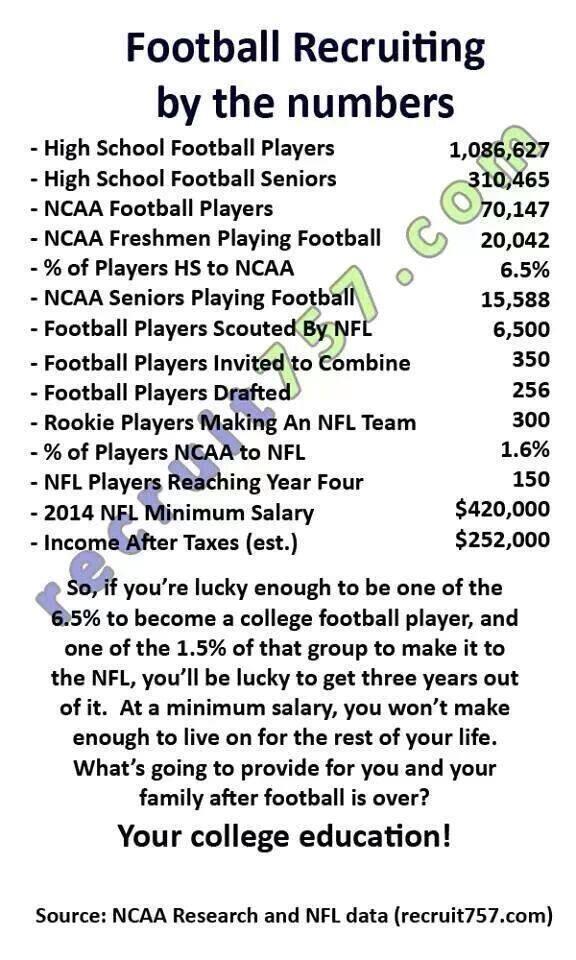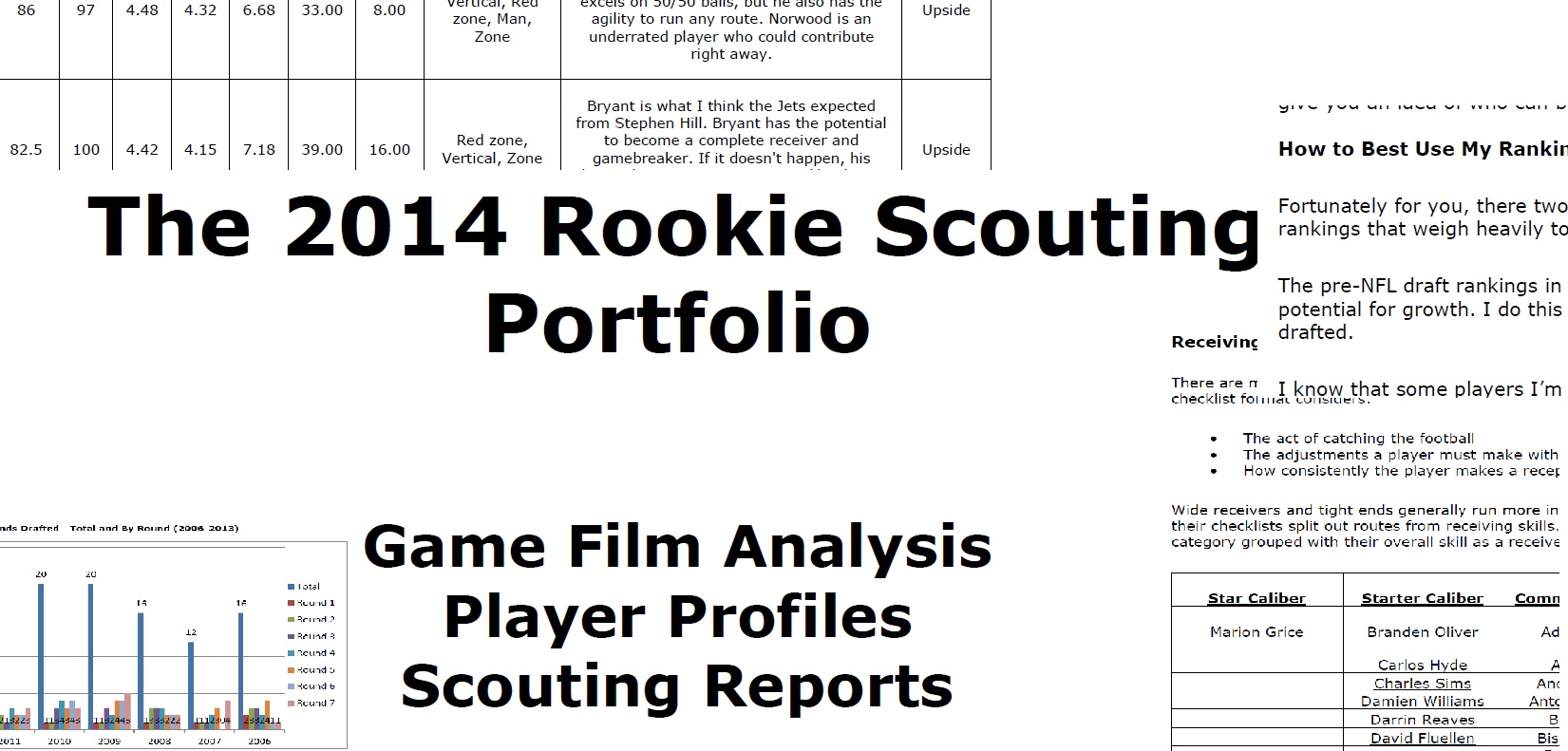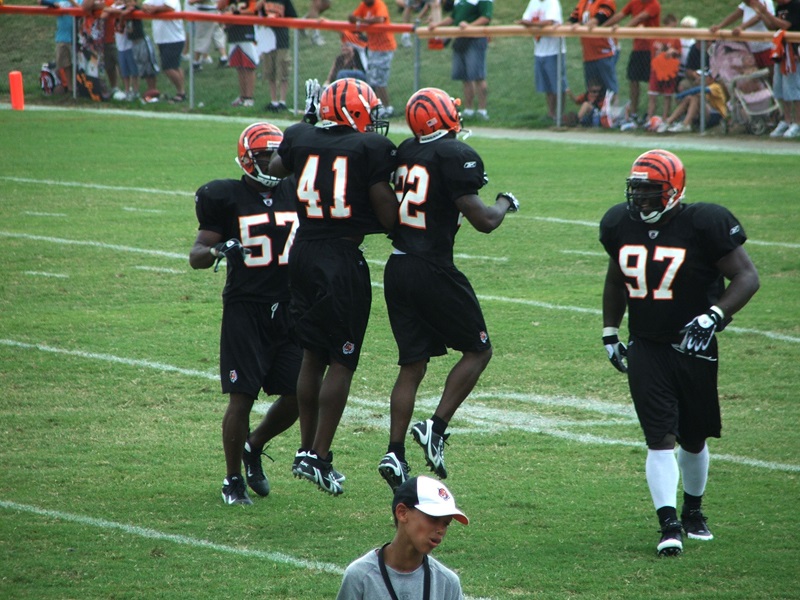
Fran Duffy’s Scouting Notebooks, Voodoo Chile Trip, Trio of Doom, and Solar in the Dark
What is Reads Listens Views?
If you’re new to the Rookie Scouting Portfolio blog, welcome. I post links on Friday to content I’m saving for later consumption. You may not like everything listed here, but you’re bound to like something.
Listens/Views
[youtube=http://youtu.be/MMGwTJ63jcA]
Love videos like this, although I’ve heard better Hendrix versions and I can’t talk about this song without sharing this version . . .
[youtube=http://youtu.be/OEJh2FFUUoU]
Download the 2014 Rookie Scouting Portfolio
Friday’s are also my chance to thank you for reading my work, encourage you to follow the RSP blog, and download the Rookie Scouting Portfolio publication.
The RSP is available every April 1 for download. This year’s RSP is nearly 300 pages in the draft guide section and filled with analysis of 164 skill position prospects that has earned a loyal following:
- Rankings
- Draft history analysis
- Overrated/Underrated analysis
- Multidimensional player comparisons
- Individual skills analysis by position
You can learn more about the RSP here. If you want to see samples of the play-by-play notes I take to write the analysis, you can find them here. If you want to know what my readers say about it, look here. If you want a quick video tour, here it is:
[youtube=http://www.youtube.com/watch?v=fRsQwtyOCDM&feature=share]
If you don’t have time to look into details, know that once you look through the RSP, there will be no question in your mind that I do the work, that I have a plan about the work that I do, and that you get more than your money’s worth. It’s why more and more draftniks every spring can’t wait until April 1.
If you think that’s a ton, you ain’t seen nothing. When you purchase the RSP, you also get a free post-draft publication that’s available for download a week after the NFL Draft. Fantasy football owners tell me all the time that this alone is worth the price.
Best yet, 10 percent of each RSP sale is donated to Darkness to Light, a non-profit devoted to preventing and addressing sexual abuse through community training in schools, religious groups, and a variety of civic groups across the U.S.
Here is what the RSP donated to D2L this year. According to D2L, the RSP’s 2013 donation amount was enough to train 250 adults in communities across the country.
Pre-order the 2014 RSP and/or download past versions of the publication (2006-2012).
In Case You Missed It/Coming Soon
- Gray Matter: Andre Williams and Anthony Dixon
- A Game of Inches: The Talent Gap Shown With Data
- Futures: Alabama MLB C.J. Mosely
- The 2014 RSP Writers Project -Sometime after the draft, we’ll get this rolling.
- Kapri Bibbs: Good vs. Great Vision
- No-Huddle Series: Wisconsin RB James White
Reads (Football)
- Scouts Notebook Series – If you haven’t checked out Fran Duffy’s excellent video series featuring the likes of Mayock, Cosell, Norris, Davis, and Pauline discussing they seek from each position, do it now.
- Factors: Cecil Shorts – A look at Shorts’ 2013 season by Football Outsiders’ Rivers McCown.
- Field Gulls dug up a Bill Walsh presentation on his offense – It’s technically a view, but go over there and check it out if you have an hour.
- If You Give A Mouse A Concussion . . . – Robert Klemko’s story on a Stanford student’s research that might one day have an impact on football.
- A Star Player Accused, and a Flawed Rape Investigation – It’s not an on-field story, but it’s important to see how higher education and big-time sports are often a poor mix.
- Meet the Bag Man: How to buy college football players, in the words of a man who delivers the money – Excellent work from Steven Godfrey. I don’t care that he couldn’t name sources. I understand why. Encore from last week.
Listens
[youtube=http://youtu.be/zfFmTefVGg8]
Reads (Life In General)
- Scientists Discover How to Generate Solar Power in the Dark – Some optimism for your week: Meet ‘photoswitches,’ a breakthrough set of materials that act as their own batteries, absorbing energy and releasing it on demand.
- Borderland – This NPR photo-driven series is excellent. They traveled 2,428 miles along the Mexican border. Here’s what they saw.
- John Roberts and the Color of Money – Applying the history of white supremacy in America to the Supreme Court’s McCutcheon decision.
- Exposing the NSA: A Public Service Worthy of a Pulitzer Prize – The national-security state and its apologists don’t see it that way—which is why we have the First Amendment.
- Is Stop-And-Frisk Worth It? – Civil-rights activists love that it’s now unconstitutional. But law-enforcement officials say the practice has made U.S. cities dramatically safer. Now what?
- Beyond Boston – As America marks the anniversary of the Boston terrorist attack, survivors of three earlier bombings describe their journeys forward.
Listens
[youtube=http://youtu.be/Rf8m3Ww-Unk]










